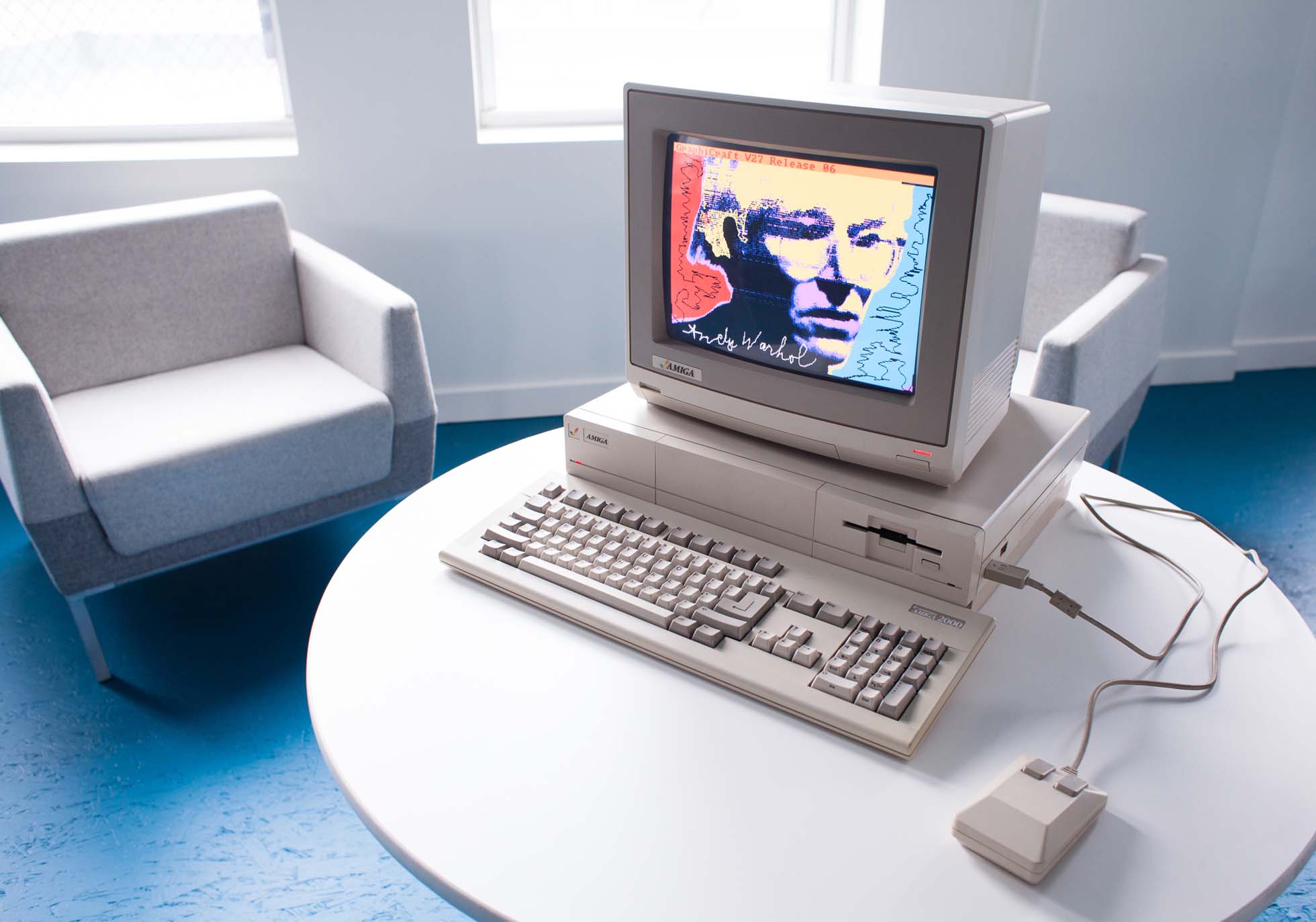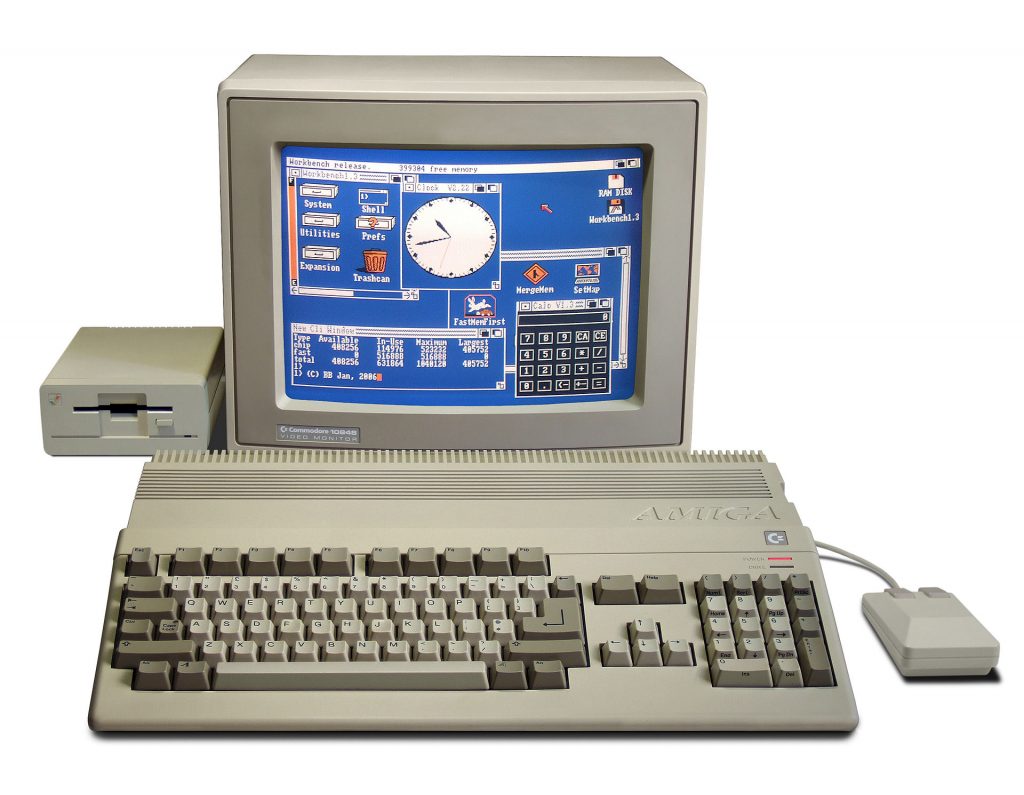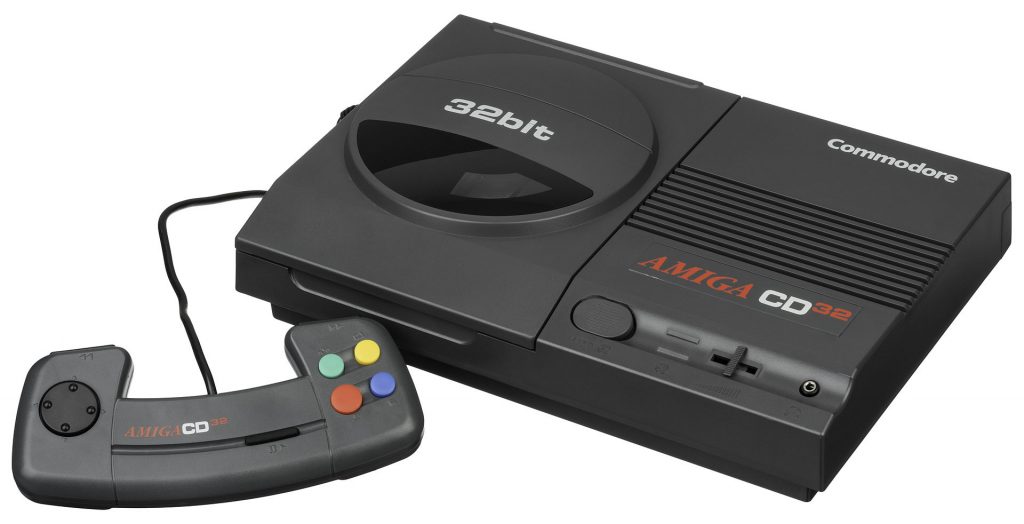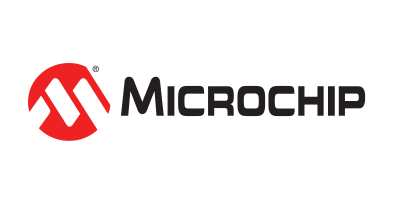
About Amiga and Minimig
Home is a story of people who reside in there, the colors are background music and the furniture are the second lead of the story.
The Amiga is a family of personal computers introduced by Commodore in 1985. The original model is one of a number of computers with 16 or 32-bit processors, 256 KB or more of RAM, mouse-based GUIs, and significantly improved graphics and audio compared to previous 8-bit systems. This includes the Atari ST—released earlier the same year—as well as the Macintosh and the Acorn Archimedes. Based on the Motorola 68000 microprocessor, the Amiga differs from its contemporaries through the inclusion of custom hardware to accelerate graphics and sound, including sprites and a blitter, and a pre-emptive multitasking operating system called AmigaOS.
The Amiga 1000 was released in July 1985, but production problems kept it from becoming widely available until early 1986. The best-selling model, the Amiga 500 was introduced in 1987 (along with the more expandable Amiga 2000) and sold four to six million units in the late 1980s and early 1990s.[1] The Amiga 3000 was introduced in 1990, followed by the Amiga 500 Plus, and the Amiga 600 in March 1992. Finally, the Amiga 1200 and the Amiga 4000 were released in late 1992.
In addition to being popular for gaming, the Amiga found a prominent role in desktop video, video production, and show control, leading to video editing systems such as the Video Toaster. The Amiga’s audio hardware made it a popular platform for music tracker software. The processor and ability to access megabytes of memory enabled the development of 3D rendering packages, including LightWave 3D, Imagine, and Traces, a predecessor to Blender.
Although early advertisements cast the computer as an all-purpose business machine, especially when outfitted with the Sidecar IBM PC compatibility add-on, the Amiga was most commercially successful as a home computer, with a wide range of games and creative software. Poor marketing and the failure of later models to repeat the technological advances of the first systems resulted in Commodore quickly losing market share to the fourth generation of video game consoles, Macintosh, and the rapidly dropping prices of IBM PC compatibles, which gained 256 colour graphics in 1987. Commodore ultimately went bankrupt in April 1994 after a version of the Amiga packaged as a game console, the Amiga CD32, failed in the marketplace.
Since the demise of Commodore, various groups have marketed successors to the original Amiga line, including Genesi, Eyetech, ACube Systems Srl and A-EON Technology. AmigaOS has influenced replacements, clones, and compatible systems such as MorphOS, AmigaOS 4 and, AROS.
Concept and early development
Jay Miner joined Atari, Inc. in the 1970s to develop custom integrated circuits, and led development of the Atari 2600’s TIA. Almost as soon as its development was complete, the team began developing a much more sophisticated set of chips, CTIA, ANTIC and POKEY, that formed the basis of the Atari 8-bit family.
With the 8-bit line’s launch in 1979, the team once again started looking at a next generation chipset. Nolan Bushnell had sold the company to Warner Communications in 1978, and the new management was much more interested in the existing lines than development of new products that might cut into their sales. Miner wanted to start work with the new Motorola 68000, but management was only interested in another 6502 based system. Miner left the company, and, for a time, the industry.
In 1979, Larry Kaplan left Atari and founded Activision. In 1982, Kaplan was approached by a number of investors who wanted to develop a new game platform. Kaplan hired Miner to run the hardware side of the newly formed company, “Hi-Toro”. The system was code-named “Lorraine” in keeping with Miner’s policy of giving systems female names, in this case the company president’s wife, Lorraine Morse. When Kaplan left the company late in 1982, Miner was promoted to head engineer and the company relaunched as Amiga Corporation.
The Boing Ball
A breadboard prototype was largely completed by late 1983, and shown at the January 1984 Consumer Electronics Show (CES). At the time, the operating system was not ready, so the machine was demonstrated with the “Boing Ball” demo, a real-time animation showing a red-and-white spinning ball bouncing and casting a shadow, this bouncing ball became the official logo of the Amiga company. CES attendees had trouble believing the computer being demonstrated had the power to display such a demo and searched in vain for the “real” computer behind it.
A further developed version of the system was demonstrated at the June 1984 CES and shown to many companies in hopes of garnering further funding, but found little interest in a market that was in the final stages of the video game crash of 1983.
In March, Atari expressed a tepid interest in Lorraine for its potential use in a games console or home computer tentatively known as the 1850XLD. But the talks were progressing slowly, and Amiga was running out of money. A temporary arrangement in June led to a $500,000 loan from Atari to Amiga to keep the company going. The terms required the loan to be repaid at the end of the month, otherwise Amiga would forfeit the Lorraine design to Atari.
Minimig (short for Mini Amiga) is an open source re-implementation of an Amiga 500 using a field-programmable gate array (FPGA).
Minimig started around January 2005 as a proof of concept by Dutch electrical engineer Dennis van Weeren. He intended Minimig as the answer to the ongoing discussions within the Amiga community on implementing the Amiga custom chipset using an FPGA. The project’s source code and schematics were released under version 3 of the GNU General Public Licence on 25 July 2007.
The original Minimig prototype is based on the Xilinx Spartan-3 Starter Kit, the Original Amiga Chipset is synthesized in the FPGA. Two printed circuit boards are attached via the FPGA kit expansion ports. The first one holds a 3.3V Motorola 68000 type CPU. The second has a MultiMediaCard slot with a small PIC microcontroller acting as a disc controller that supports the FAT16 filesystem and does on-the-fly Amiga disk file (ADF) decoding.
VGA-+-PS2 (joystick etc.)
|
CPU <-> FPGA <-> Microcontroller <-> Flashmemory
|
RAM
The prototype was shown at an Amiga meet and loaded most Amiga programs although bugs did exist. Van Weeren’s personal preferences led to the use of verilog instead of VHDL on a PC using Xilinx Webpack software for code development.






